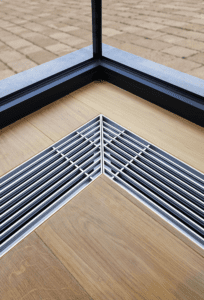When it comes to different ways to manage home heating, baseboards don’t always make the top of the list. Nevertheless, this classic home heating method has several features that can benefit homeowners. Below, we review 12 facts about baseboards that everyone should know.
4 Complications That Affect Baseboard Heating
 No system is without its complications, but as far as HVAC equipment goes, baseboard heaters have relatively minor issues:
No system is without its complications, but as far as HVAC equipment goes, baseboard heaters have relatively minor issues:
- Rather than project heated air directly upwards, baseboards radiate heat outward in all directions. The baseboards need an appropriate amount of clearance to work effectively, so if you have thick carpets or rugs, they may block the flow. We recommend giving an inch or two clearance above the ground to ensure optimal performance.
- While we all appreciate the work they do, baseboards need an appropriate amount of clearance to work effectively. Some people cover them with drapes intentionally, while others don’t think about it much and do so by accident. As with high carpets, full-length curtains can negatively impact your baseboards’ performance.
- Another common obstacle to effective heating is dust buildup. We all know that dust is attracted to electricity, so it’s no surprise that your baseboards seem to accumulate a great deal of dust. Unfortunately, that dust buildup acts insulation preventing the baseboard from releasing the heat. To avoid this issue, make sure to work baseboard dusting into your regular maintenance.
- As efficient as they are, baseboards are still one of the slower forms of heat. There’s no hot air blasting through a vent, so it may take some time before your rooms reach a comfortable temperature. Plan and turn your baseboards on before you’ll need the rooms at a regular temperature.
4 Ways Heating Baseboards Can Supplement Another System
We often recommend that homeowners use heating baseboards as a supplement in situations where their central heat doesn’t do the job 100%. In many cases, it’s far more economical to add a few baseboard units instead of upgrading your entire HVAC system to achieve the same results.
- Baseboards are best when they produce heat precisely where you need it. In any house, the main areas that bleed hot air outside and let cold air in are the doors and windows. While you can’t install baseboards beneath doors, you can install them beneath your windows. The baseboards’ hot air will immediately counteract drafty, cold air, keeping your room nice and warm.
- Similarly, you may only have a few rooms that need the supplement. Rooms in the interior of the house or with few windows may be warm enough from your current system. If you install baseboard heaters in rooms with more outside exposure, you’ll restore comfort without having to invest in more than a few units.
- When you install electric baseboards, you can often connect them to your home’s digital thermostat. Modern systems allow for a great deal of control so that you can schedule when the heaters come on and treat the baseboards as a separate unit.
- Another use for baseboards is to warm those areas that we often overlook. Central heaters are usually excellent for your primary rooms, but garages and basements tend to get less attention. During the winter, you may find that your pipes present a freezing risk; baseboards are the perfect solution to this problem.
Four Points on Heating Logistics
To round out our list, we wanted to cover a few logistical details you might not already know:
- When it’s cold, we all want it to heat up faster. Unfortunately, heating systems generally work at one speed. Therefore, cranking the heat to 80 degrees won’t heat things any more quickly than setting it to 71 degrees.
- You can even save money by taking advantage of your digital thermostat’s scheduling options. When everyone’s tucked away at night, the heat doesn’t need to be set so high. We recommend setting your temperature to 63 or 61 degrees and set it back to your daytime target just before wakeup time.
- There are two kinds of baseboard heaters: electric and hydronic. Electric units are self-contained, while hydronic heaters use a fuel source to heat water or oil and pump it through each baseboard in the system. Depending on your home, one or the other may make more sense, though hydronic heaters will require some additional maintenance.
- Baseboards aren’t a forced-air system, so while they will take longer to get your home to the desired temperature, they’ll heat the air more evenly, resulting in a consistent temperature without periodic blasts.
How to Learn More about Home Heating with Baseboards
Every home is different, but if you’re someone who has always had a cold room or suffers from freezing pipes during the winter, then heating baseboards may be right for you. We encourage you to contact a qualified HVAC contractor who can answer any questions you have and make an informed recommendation about how much heating assistance you need and where you should place your baseboards.

